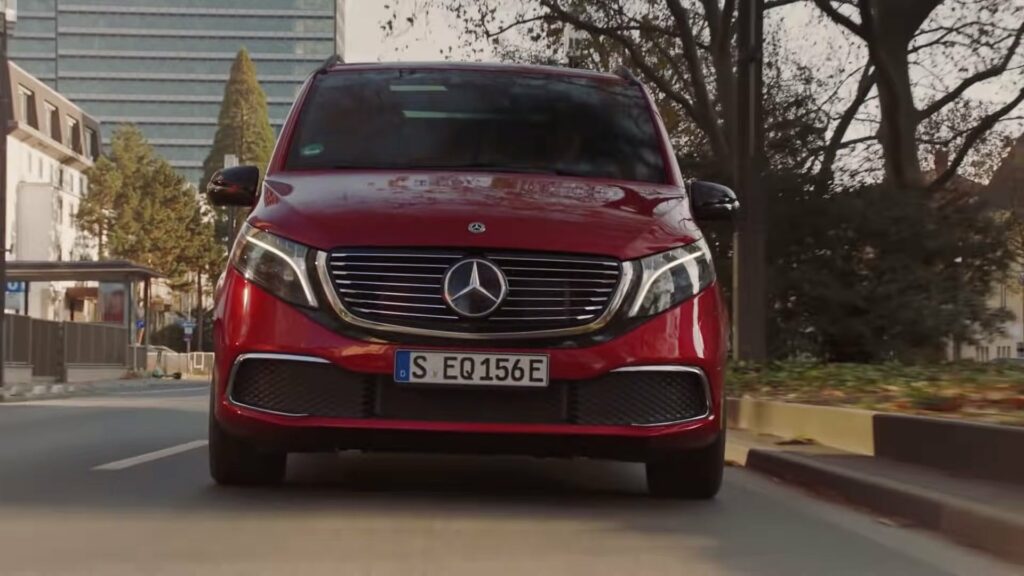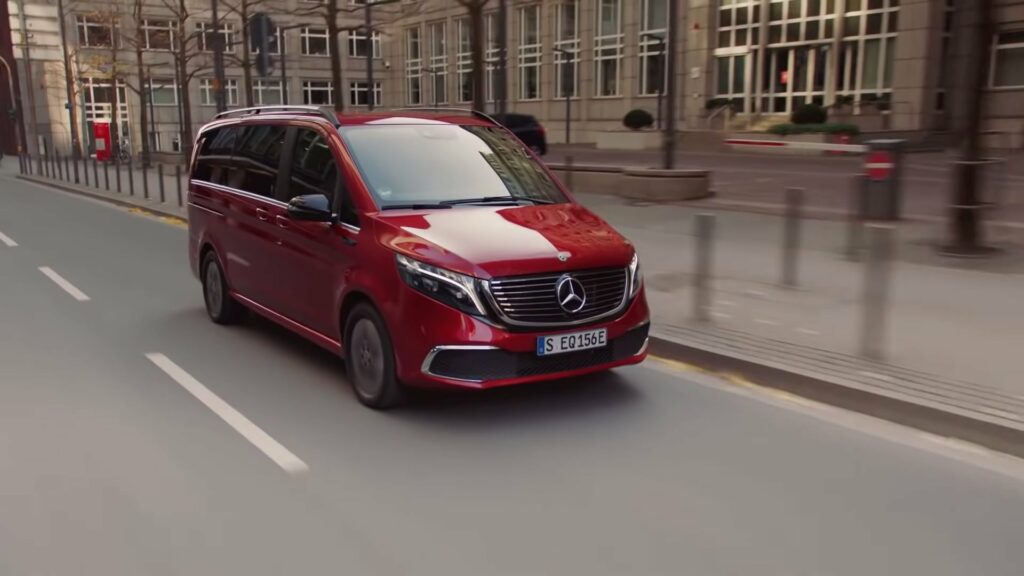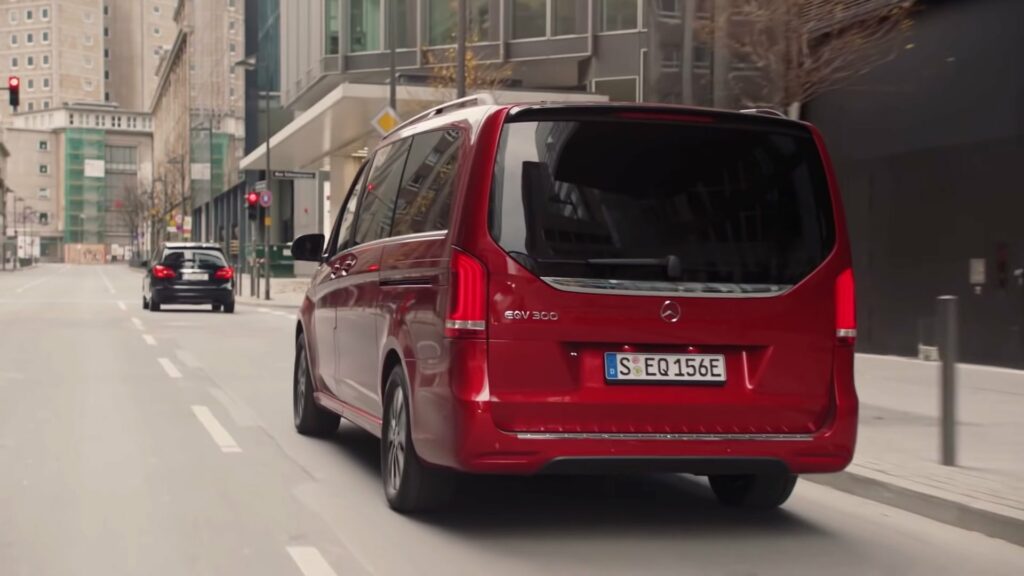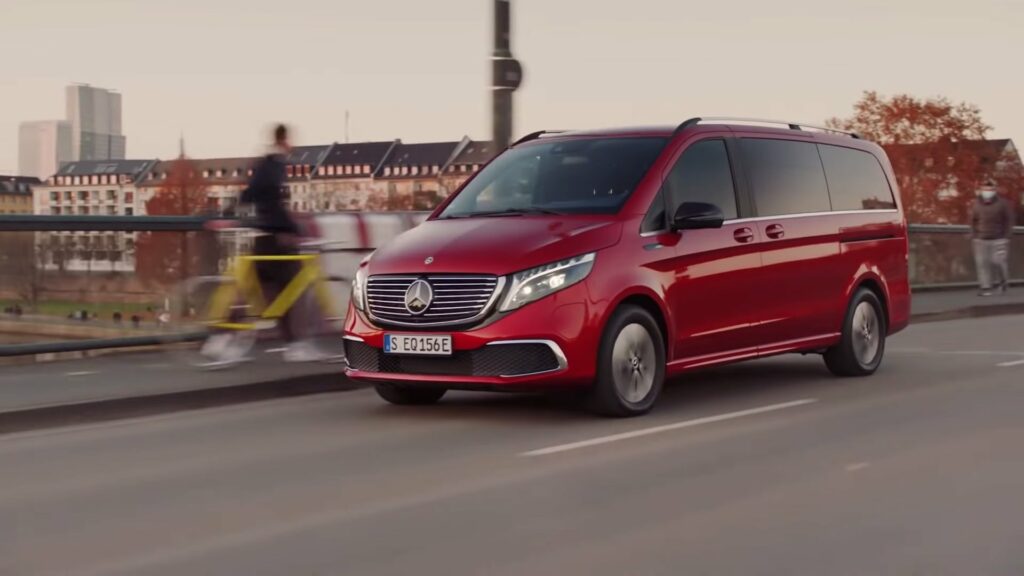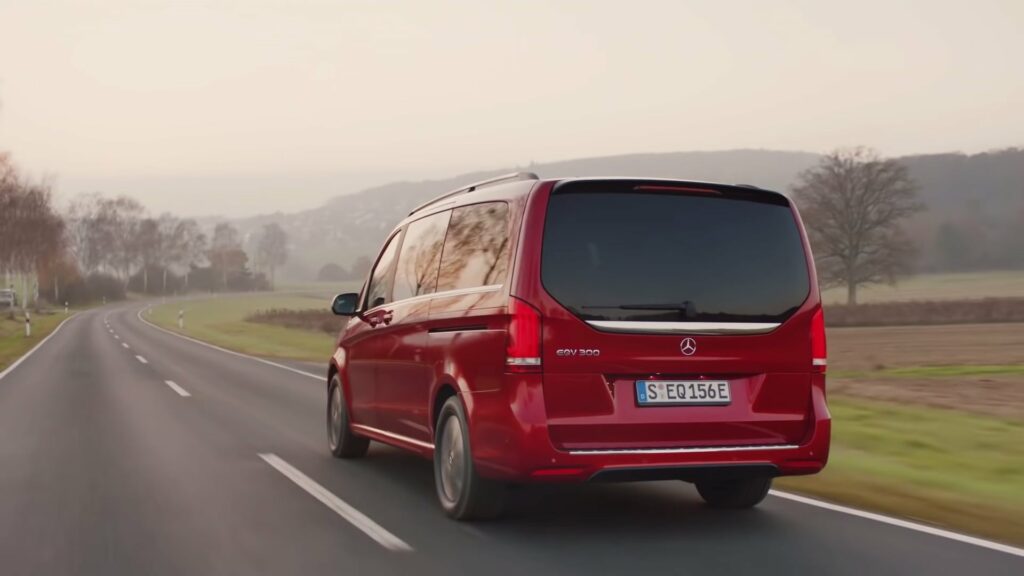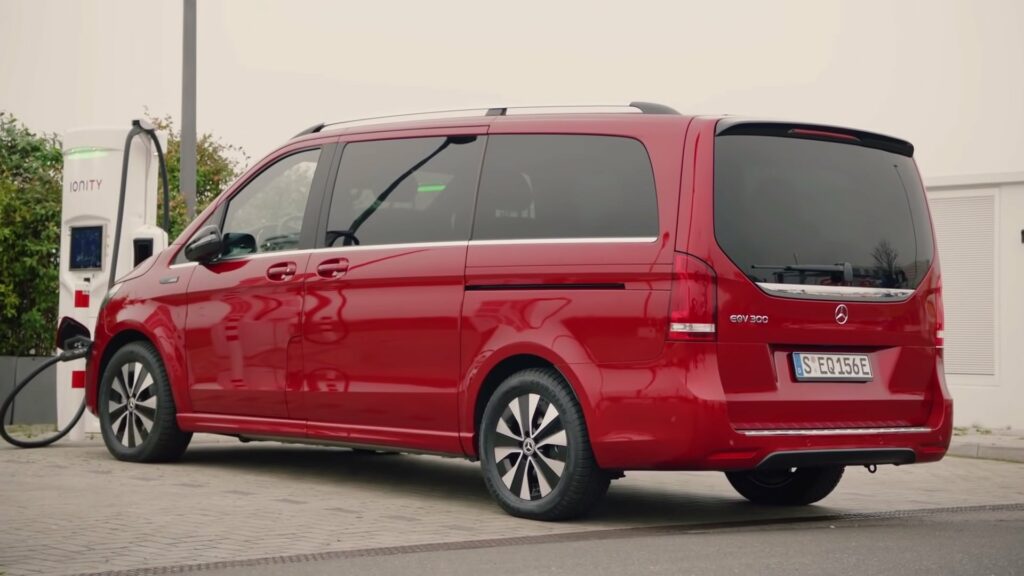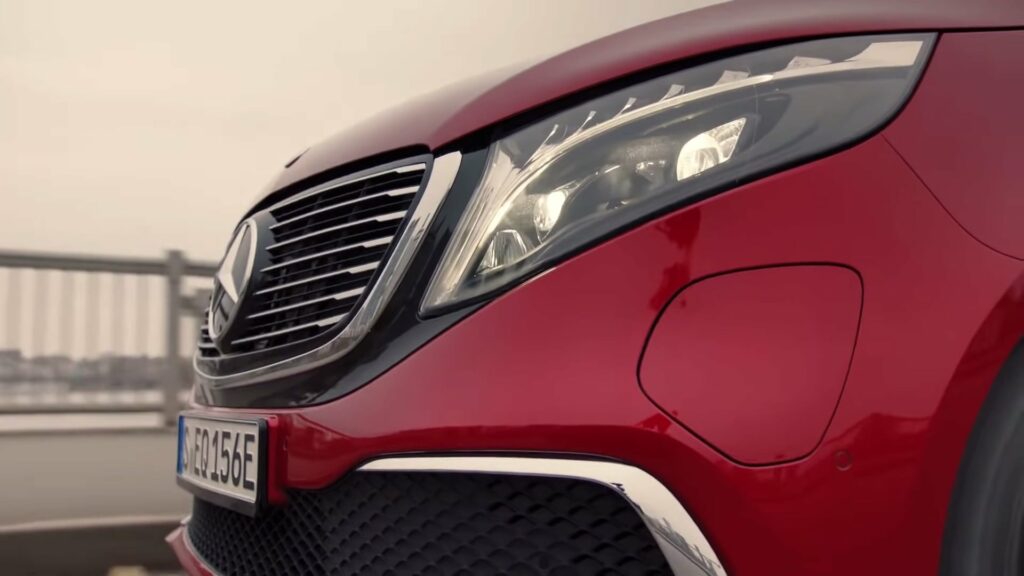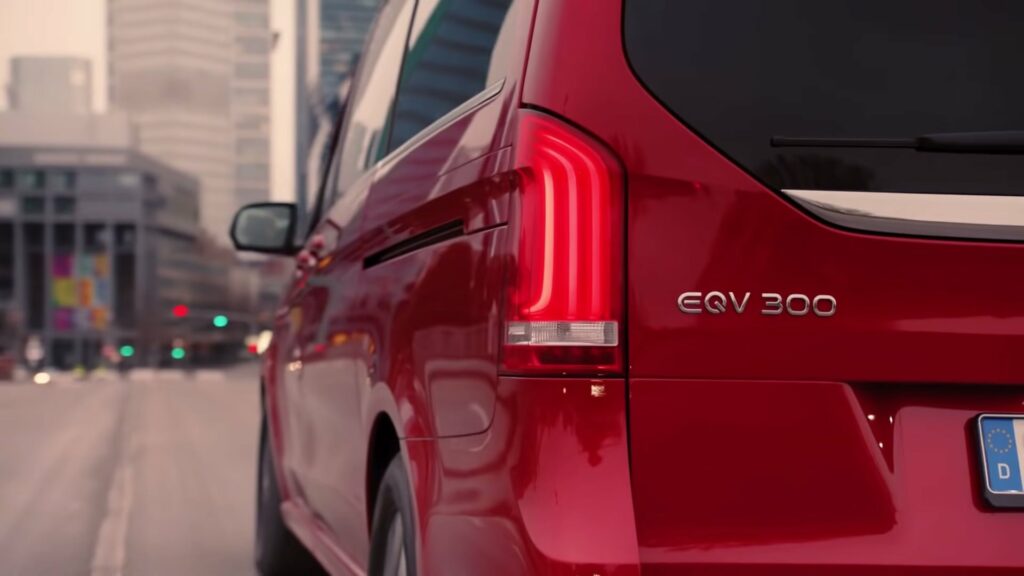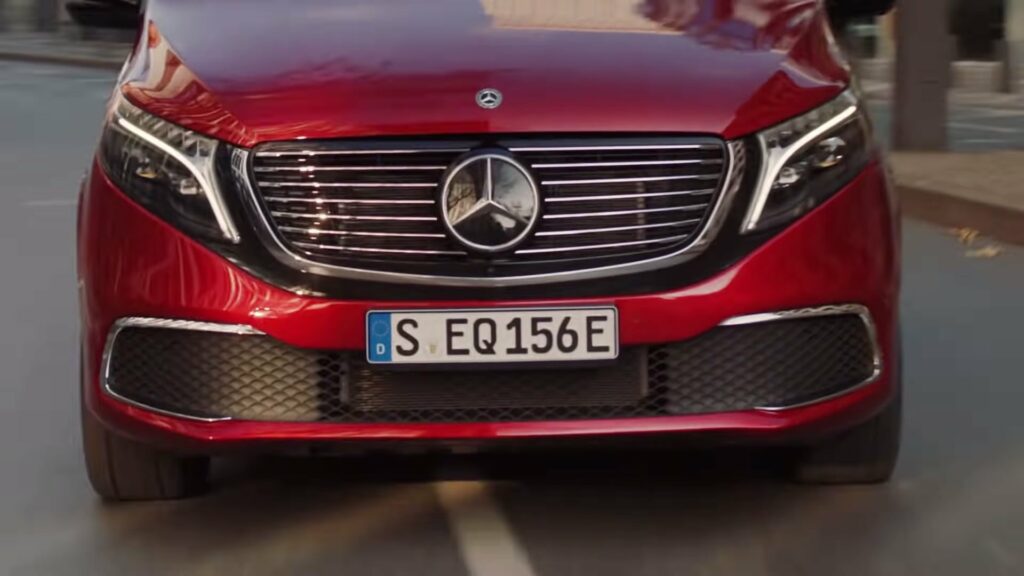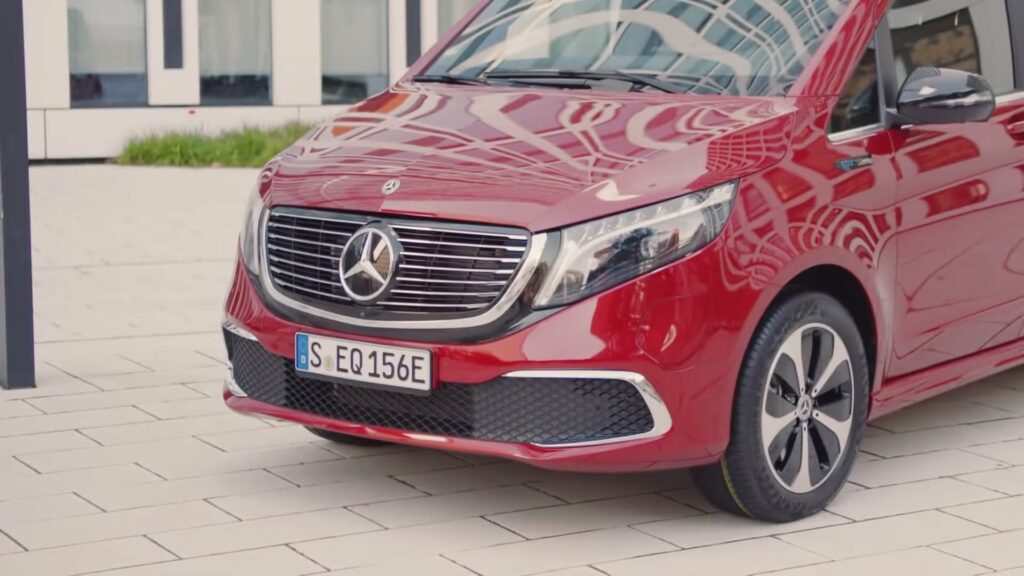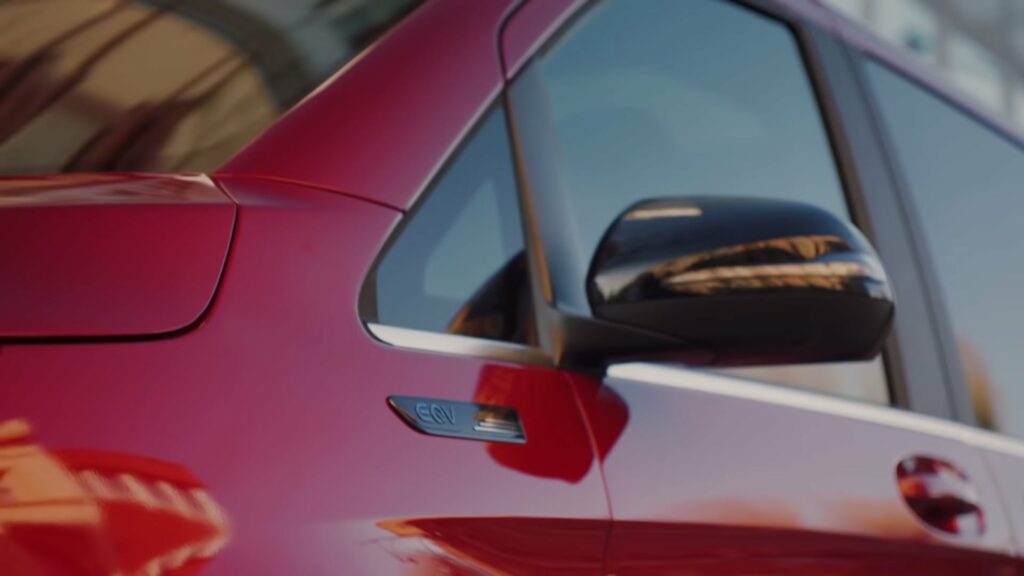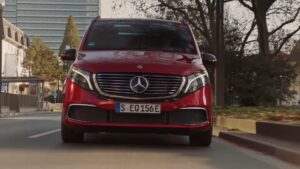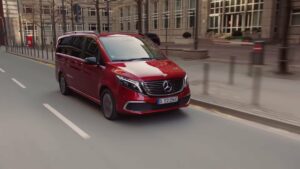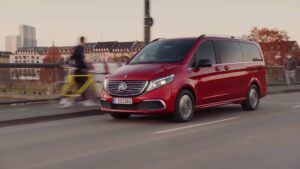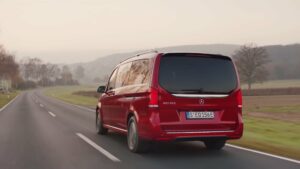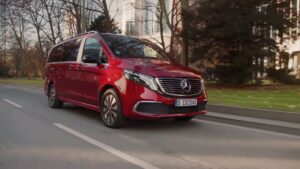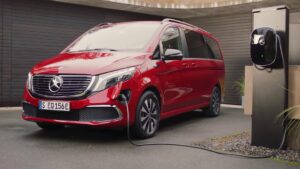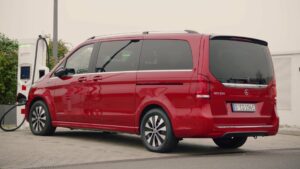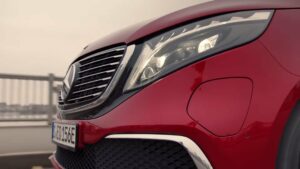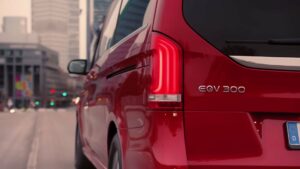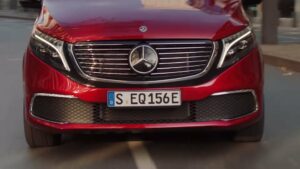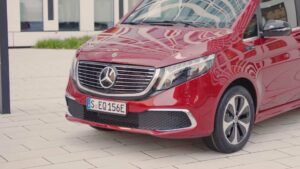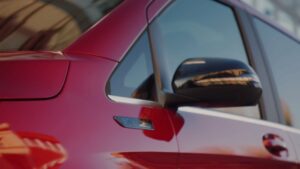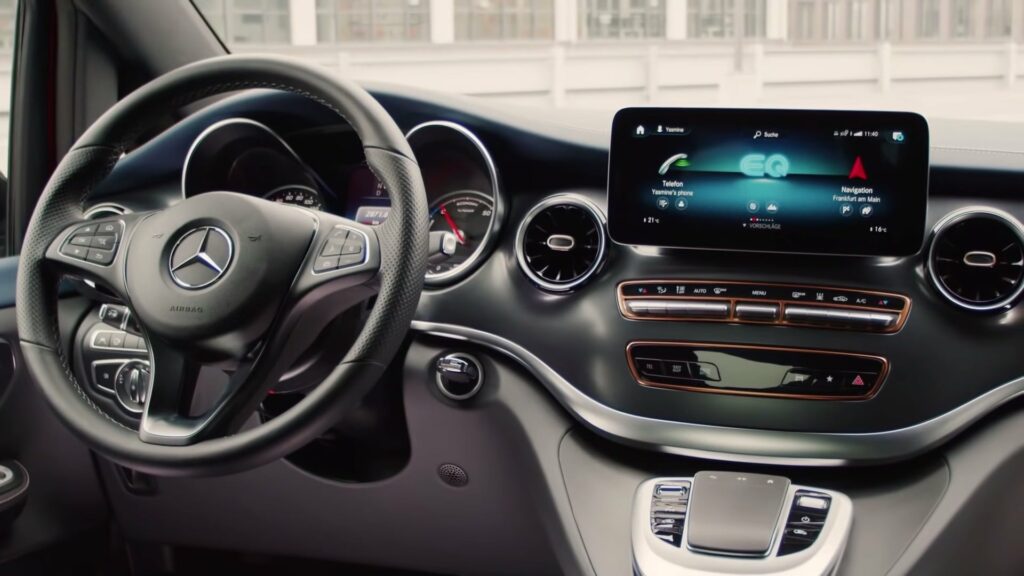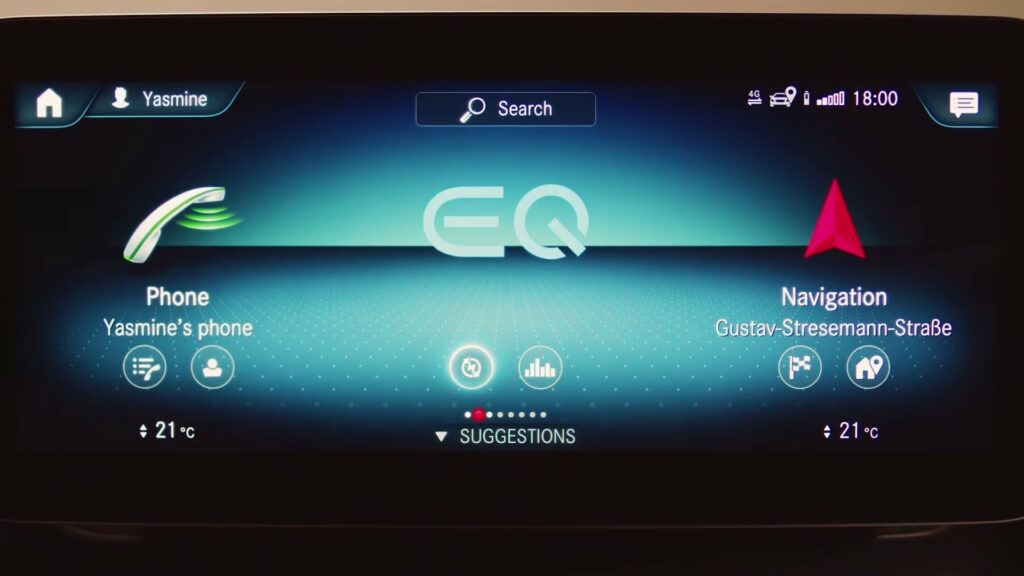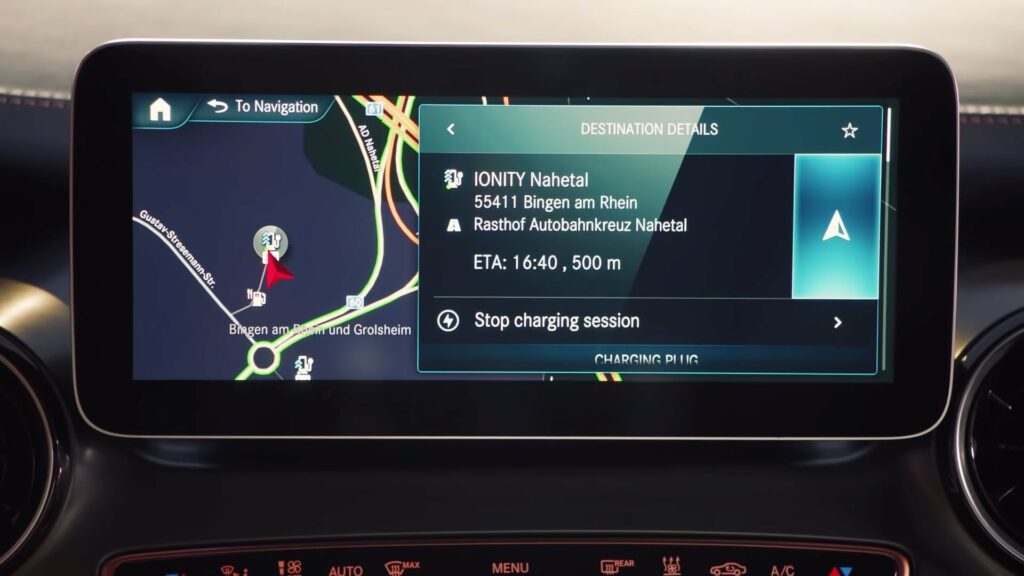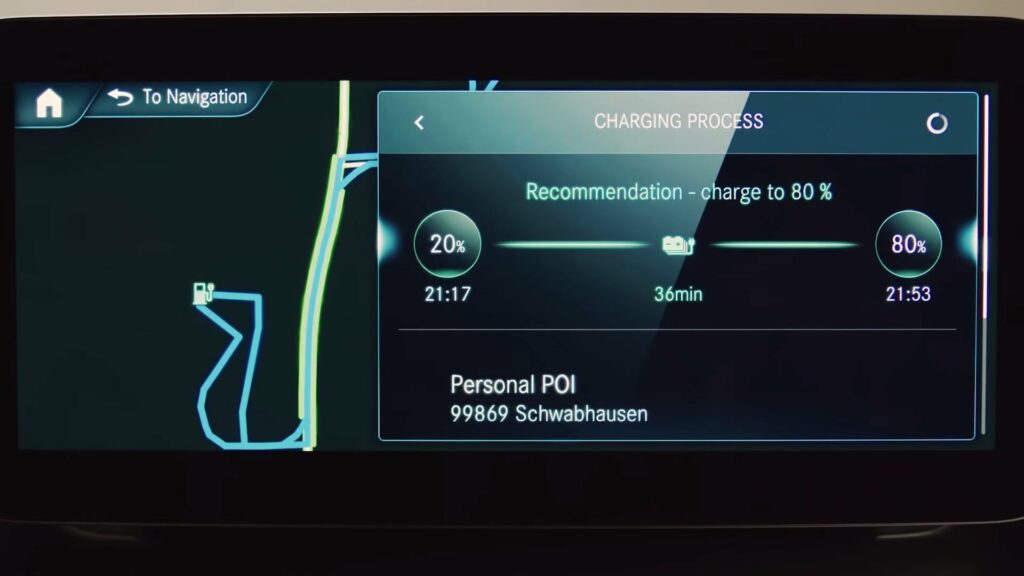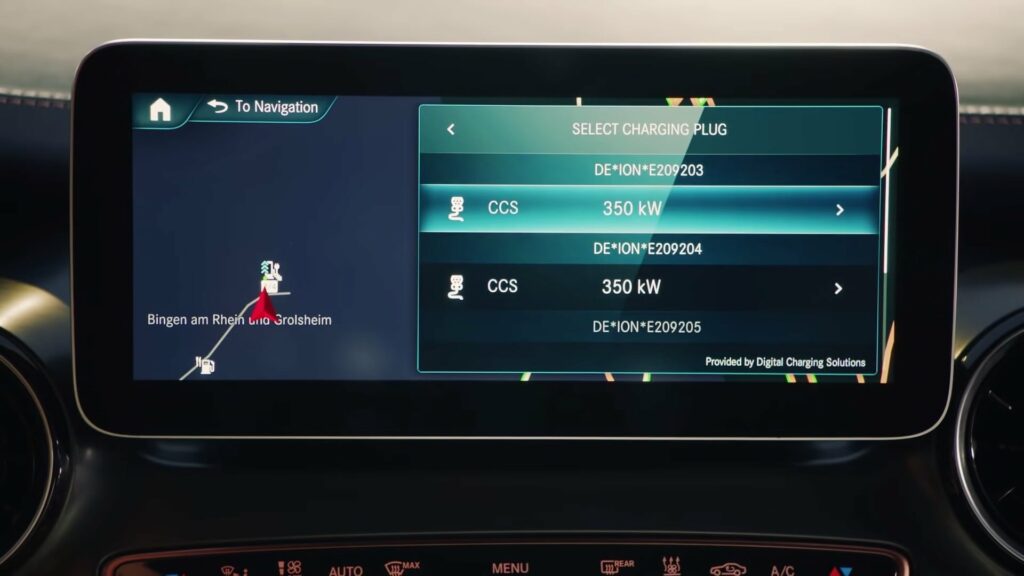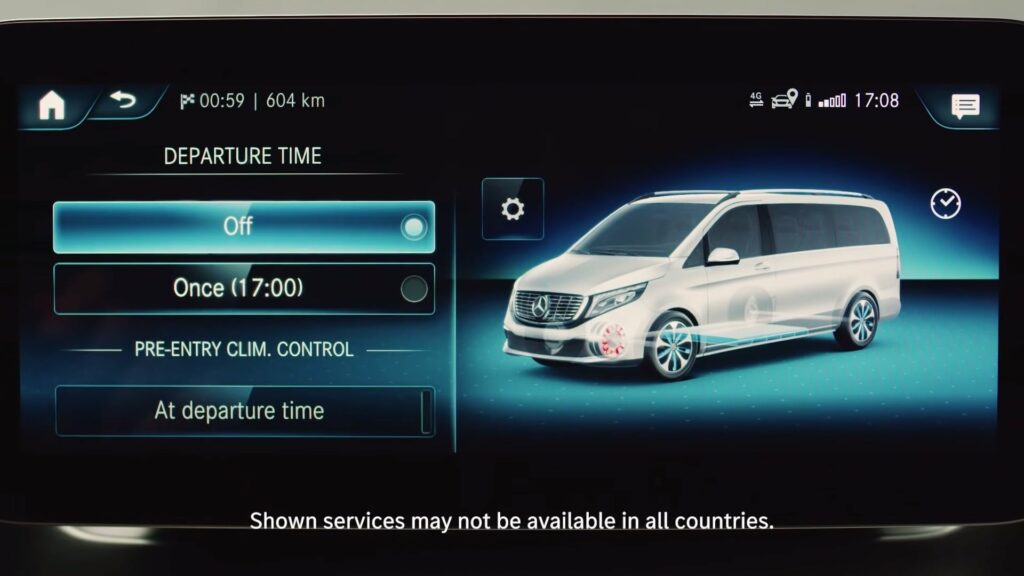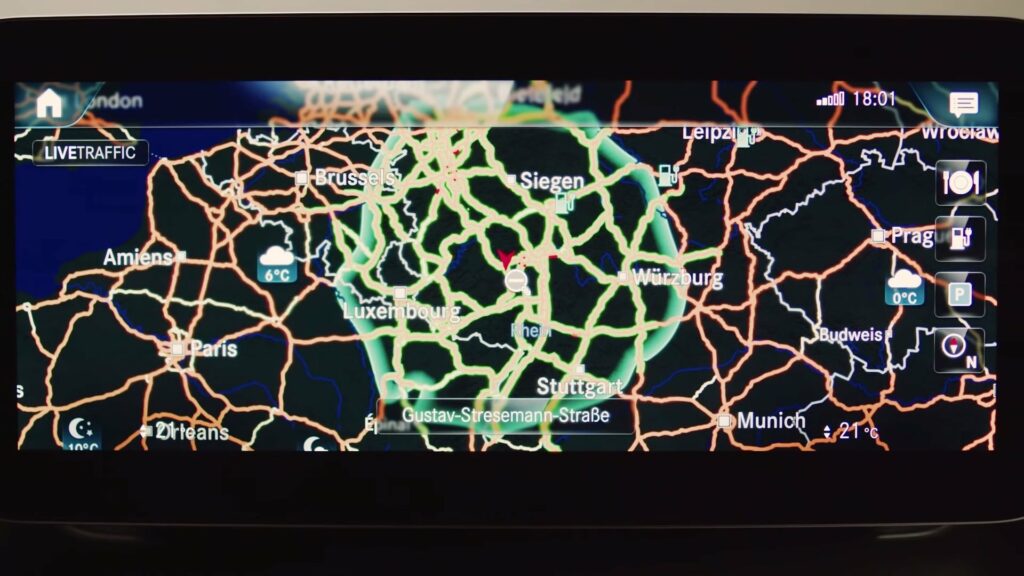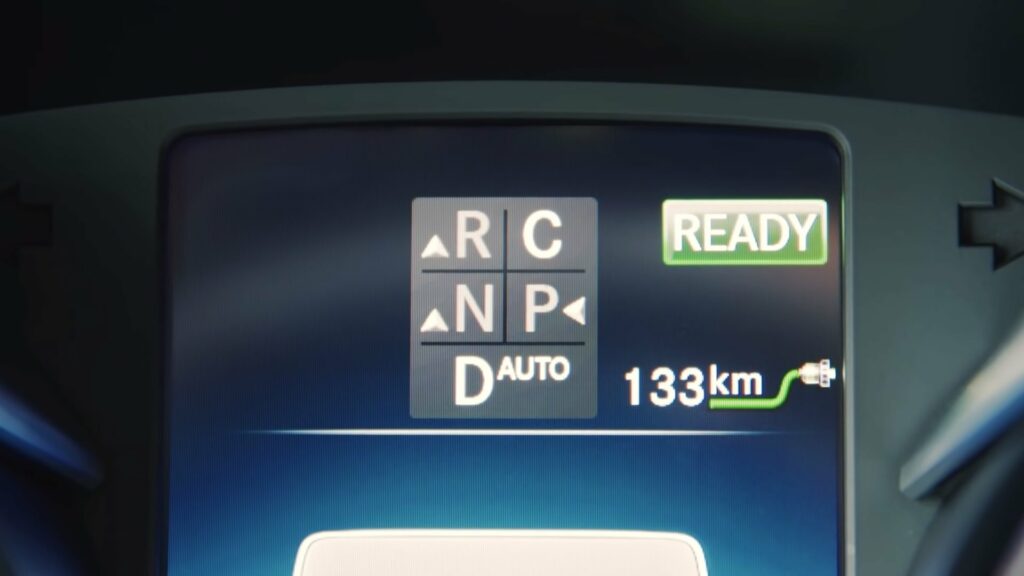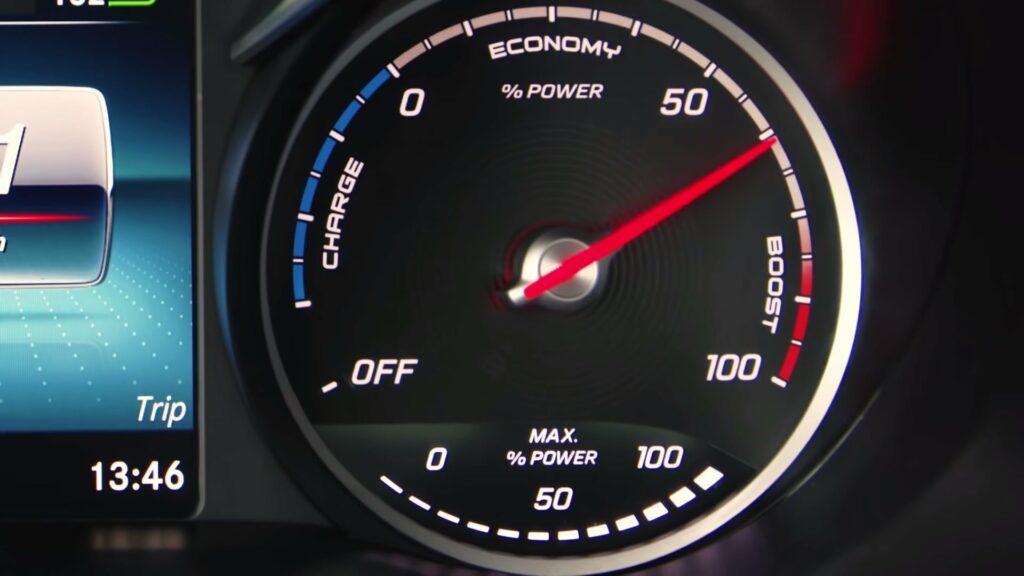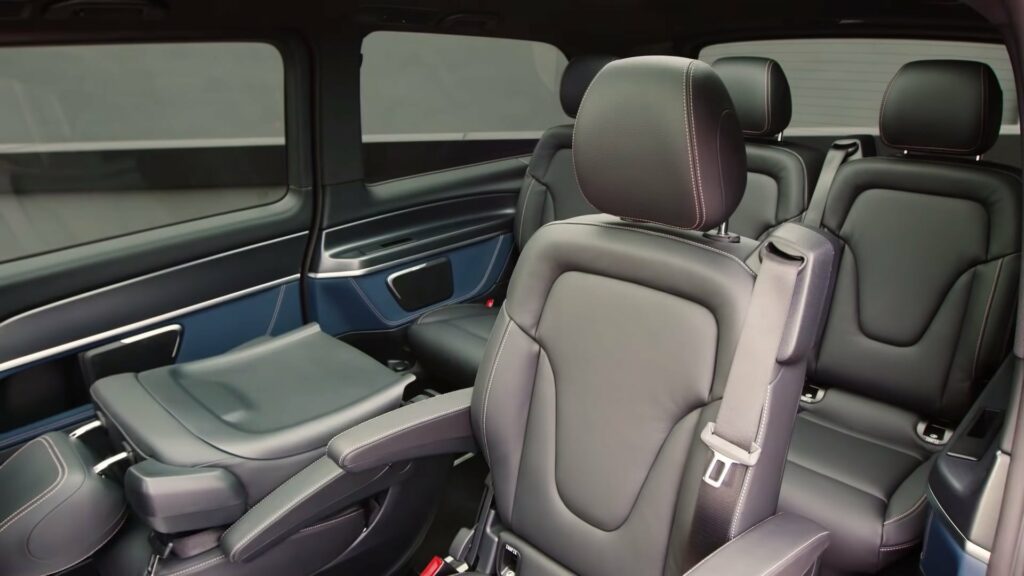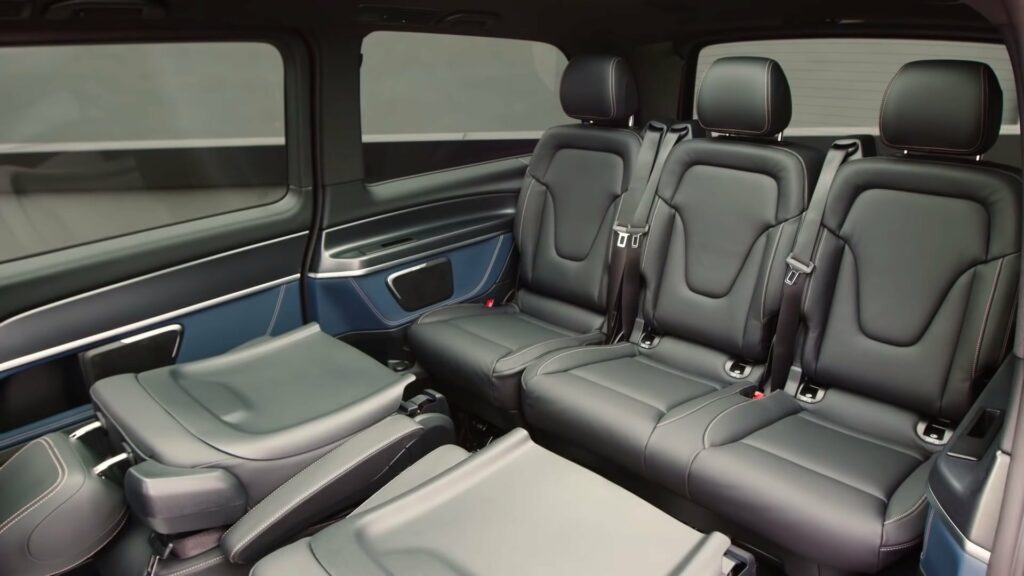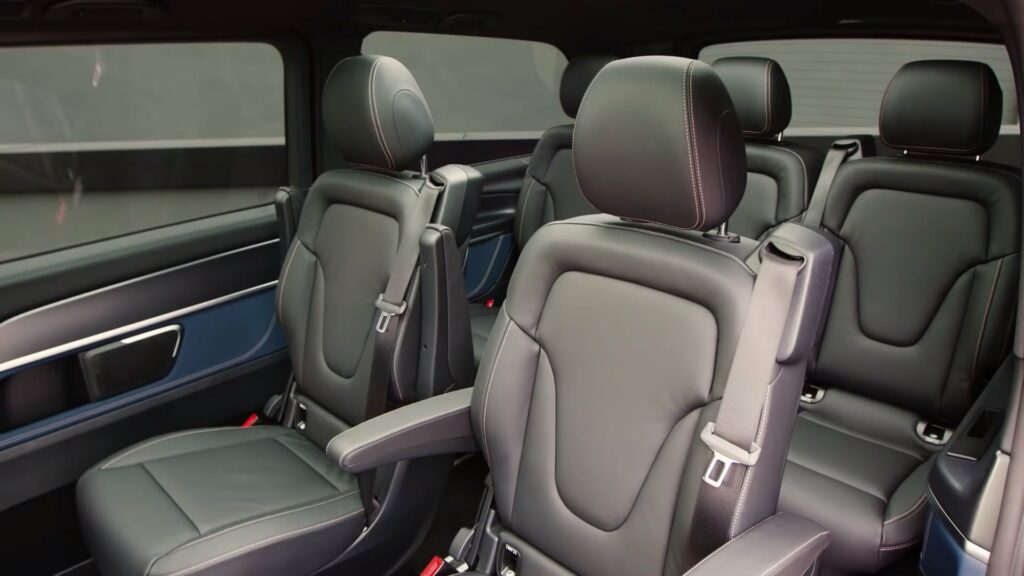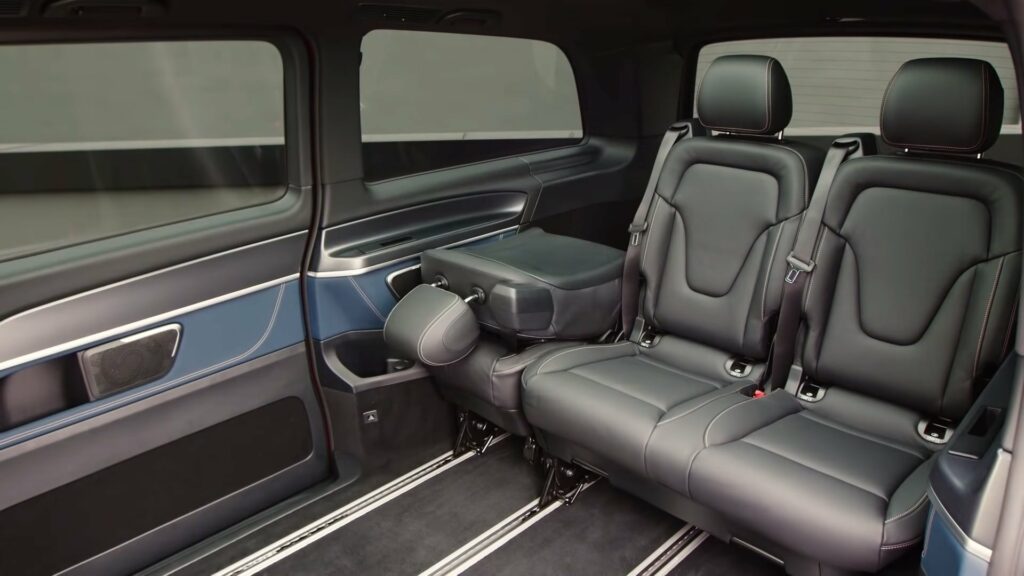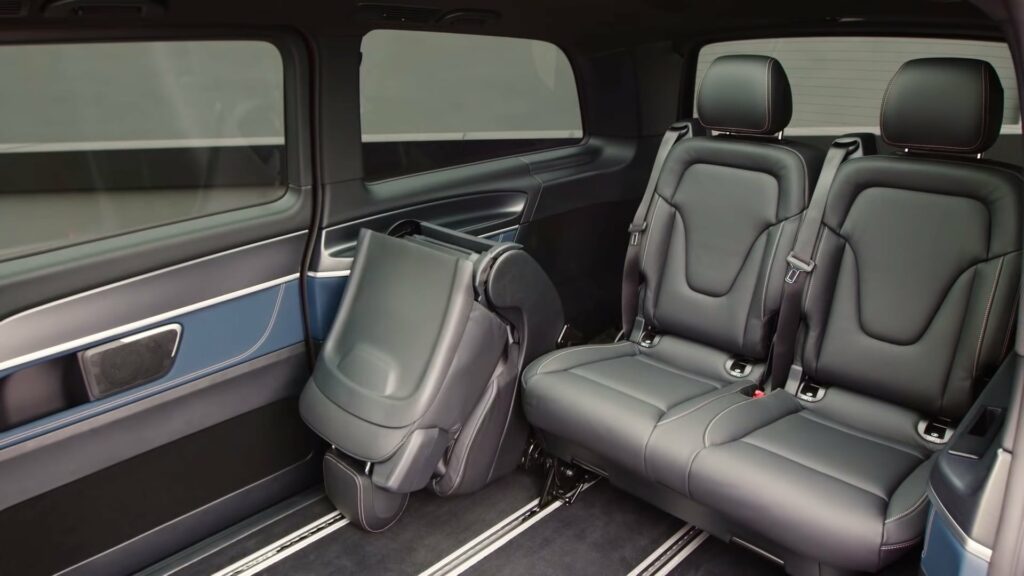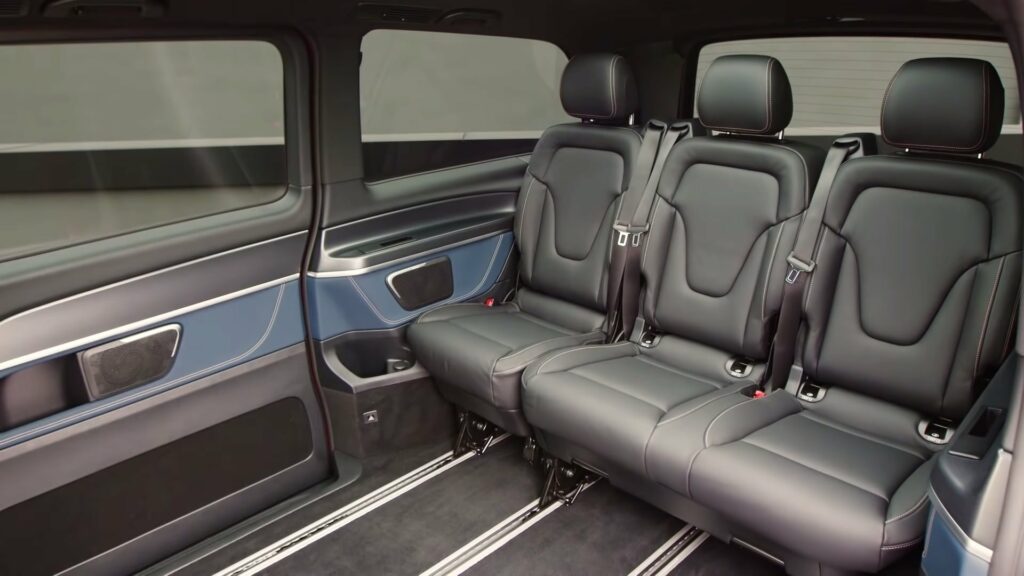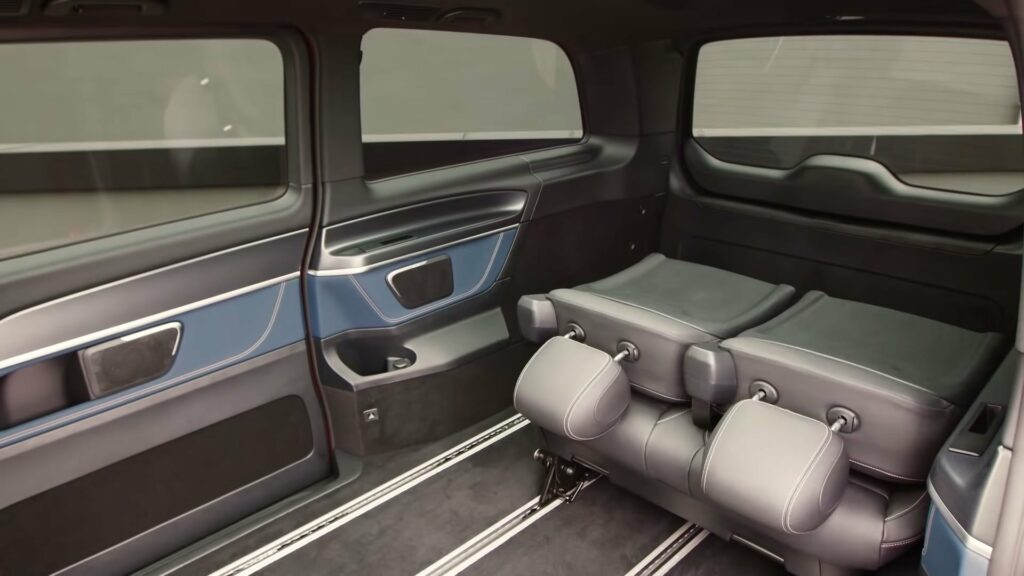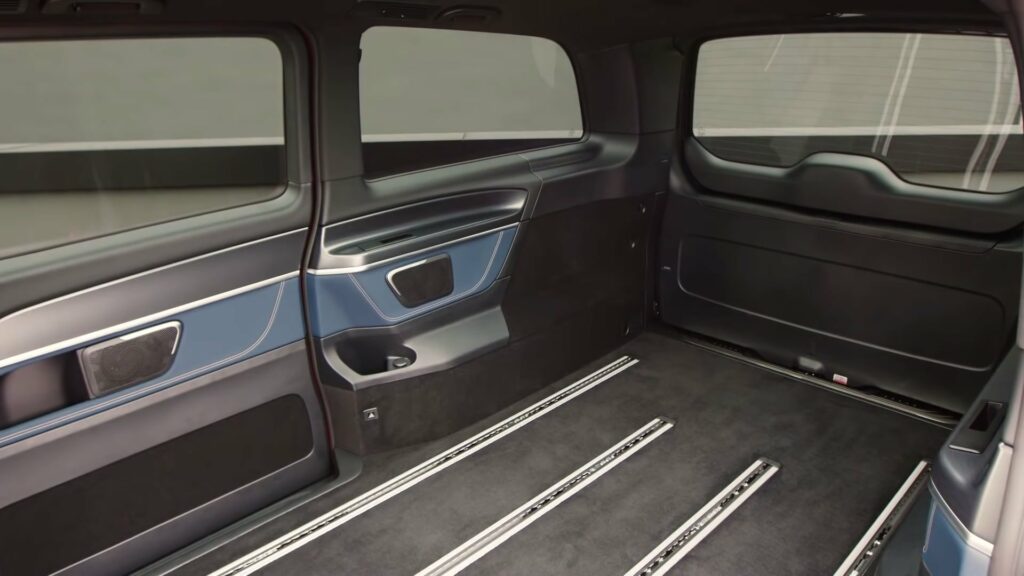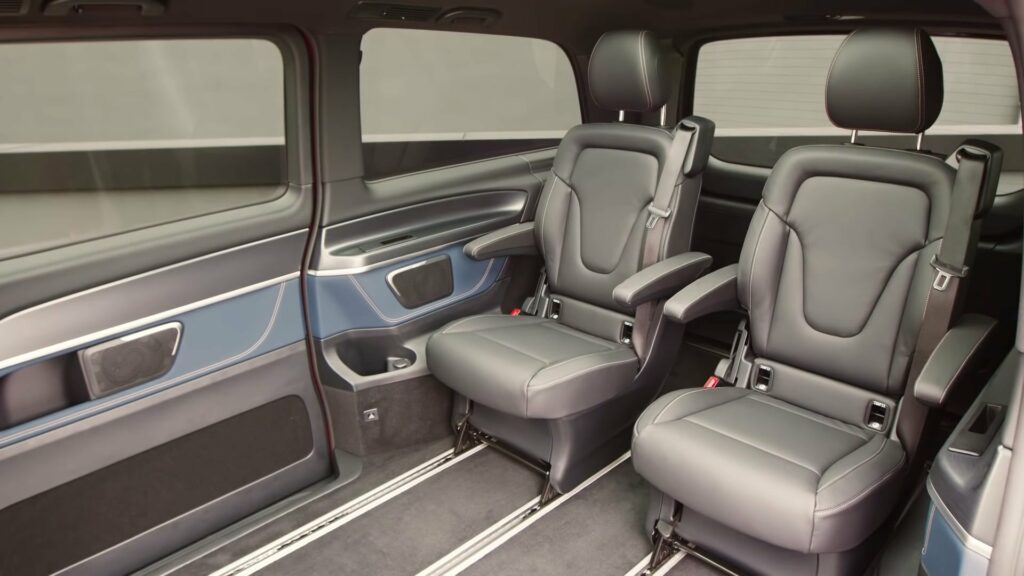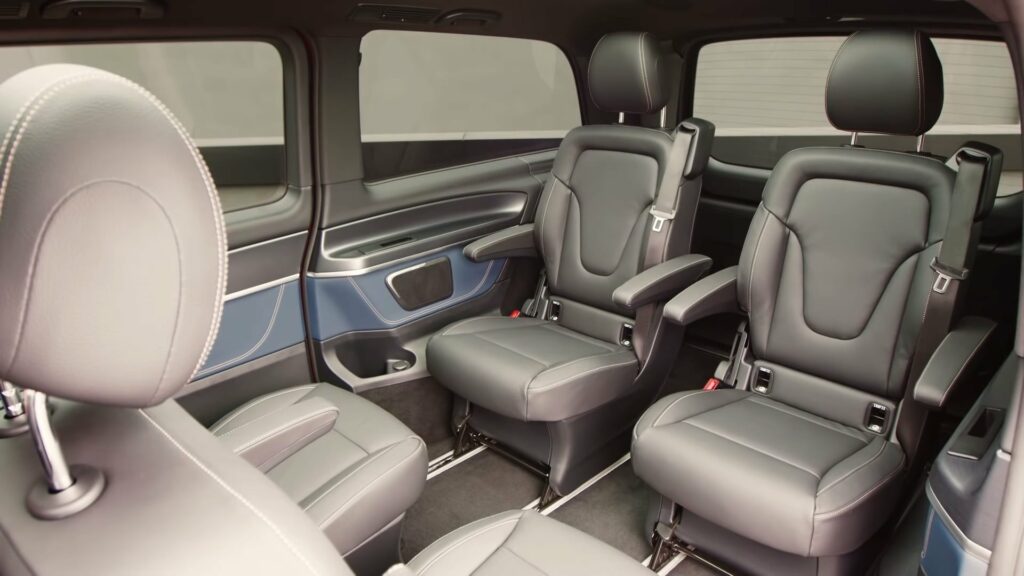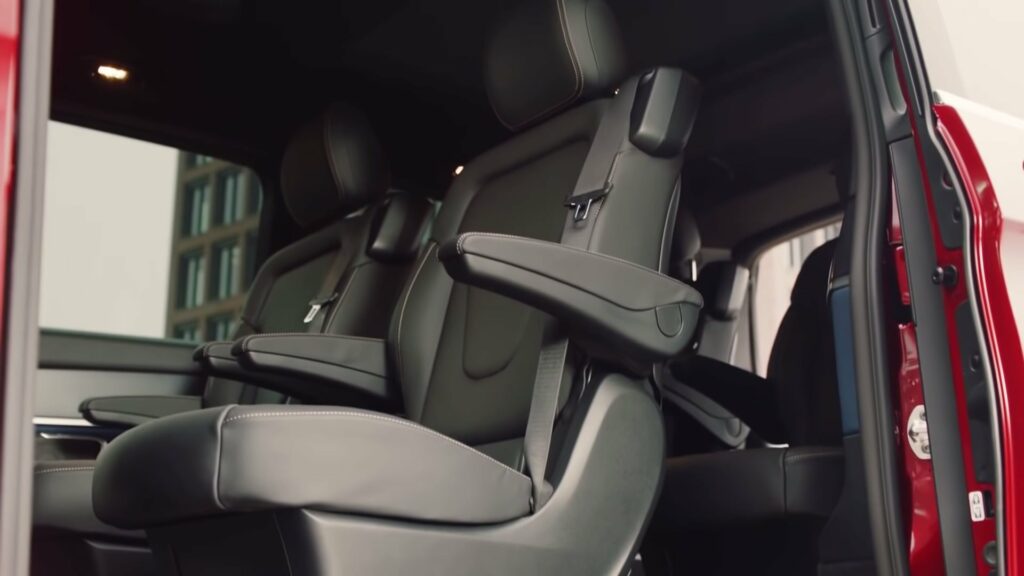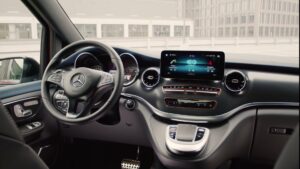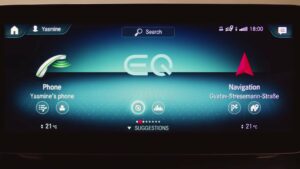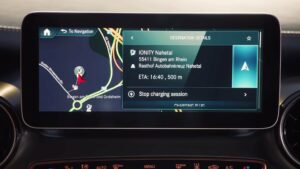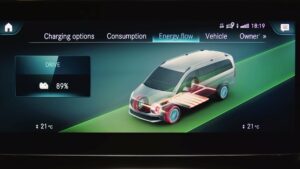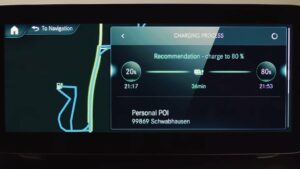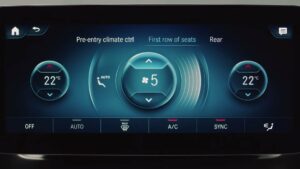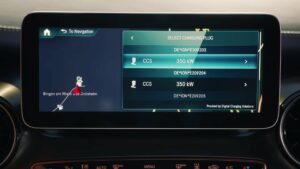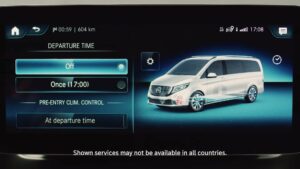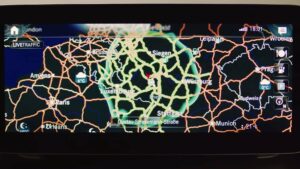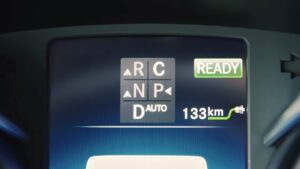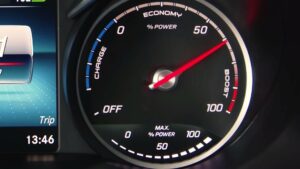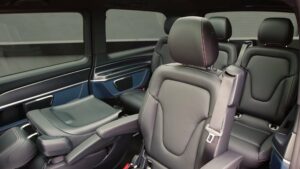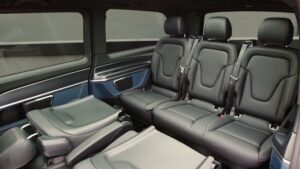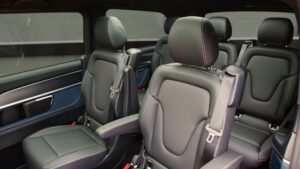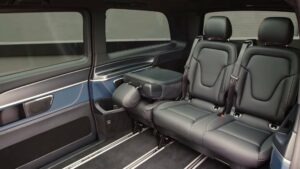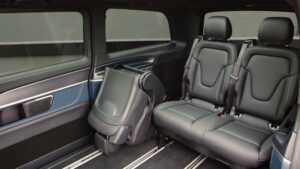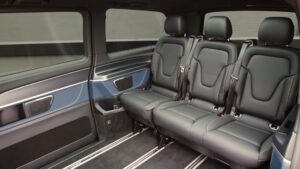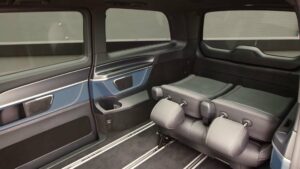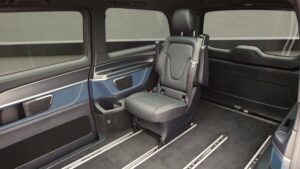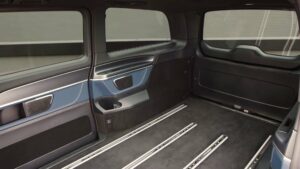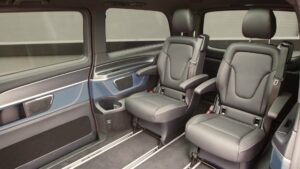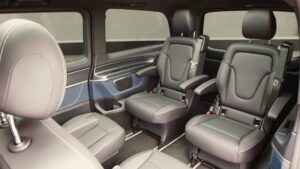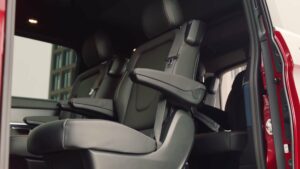Mercedes EQV 300 Long
The Mercedes-Benz EQV is a front-drive electric passenger van from the German manufacturer. It is a premium vehicle created on the basis of a V-class minibus. The concept of the future electric car was presented in Frankfurt in the spring of 2019. Among the main advantages of the car should be allocated high environmental friendliness, comfort, practicality, as well as good mileage.
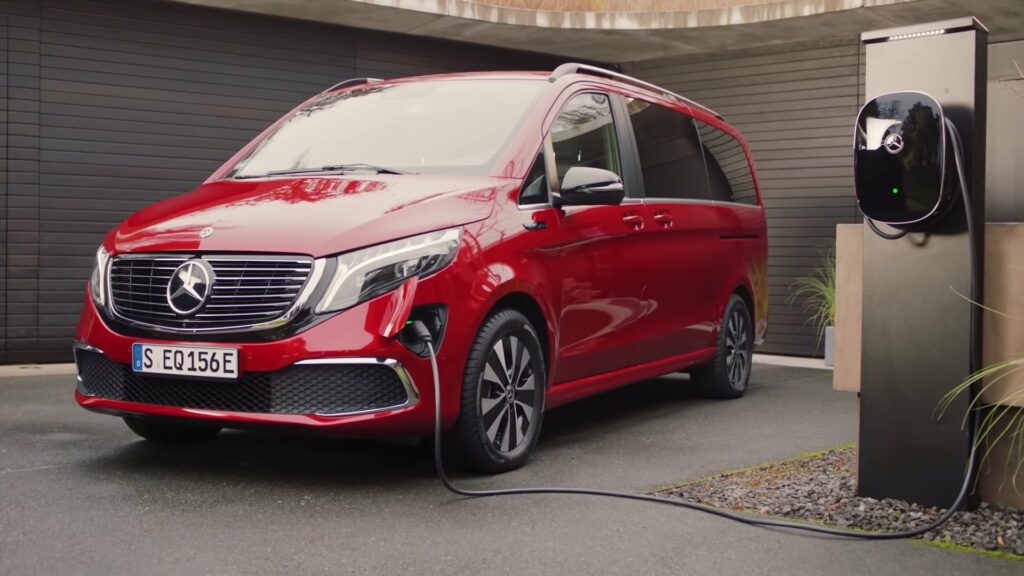
If we talk about the technical component, the car is based on an electric motor. Together with the transmission, power electronics, and cooling system, it forms a single compact module, which is located above the front axle. The power of the motor is 204 hp and the torque is equal to 362 Nm. Thanks to this, the environmentally friendly car is able to reach a top speed of 160 km/h. The battery capacity of 90 kWh is located on the floor of the electric car. It provides a range of 400 km on the WLTP cycle. The location of the battery has a positive impact on the stability of the car on the road, as well as on its driving characteristics. The charging socket is located on the front bumper on the left, it is not always convenient for the car owner. As for charging the battery, the driver has several options here: at home with a wall box or a standard socket, as well as at a public station. It will take about 10 hours to get a full charge from a household outlet. And if you use a quick-charge station, it will take the driver much less time to restore the battery 10 to 80% – only 45 minutes.
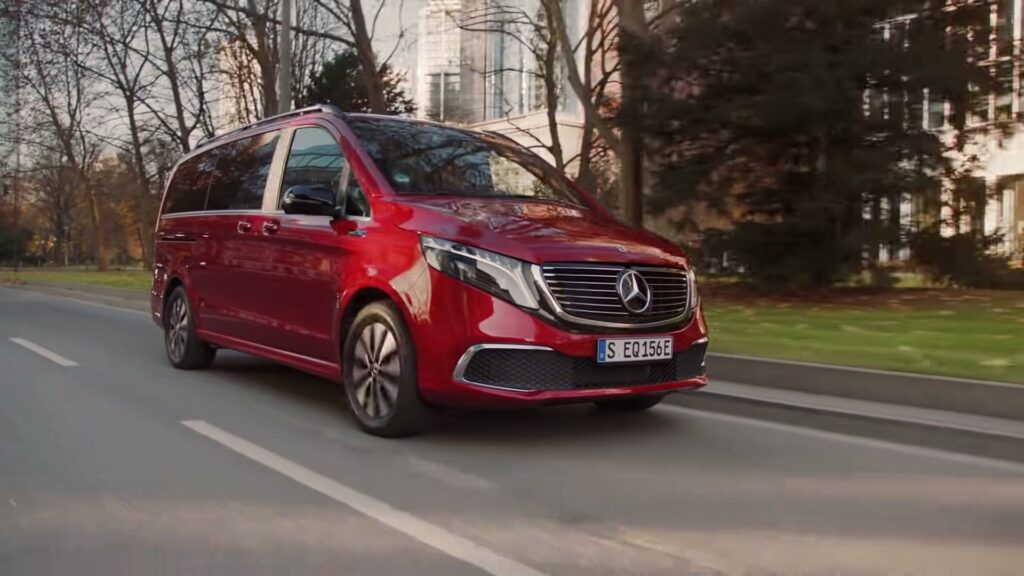
The model is equipped with a 10-inch screen of an innovative multimedia system, where the main controls of the vehicle are located. Also built into the car is an infotainment system that combines innovative connectivity features and a voice control system. Different driving modes can be selected here, as well as a special function that is responsible for energy recovery. In addition, the owner of the van has at his disposal a special application called Mercedes me. Using it, you can remotely control the car, adjust the temperature in the cabin, calculate and track the route, as well as monitor the battery level.
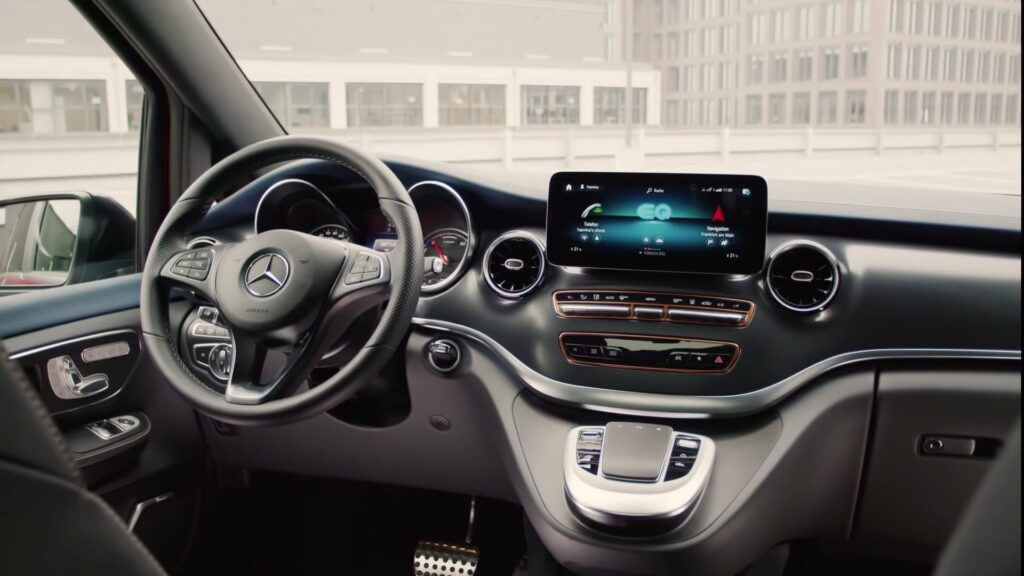
Visually, the car’s design follows the same styling as the other electric models in this line. However, at the same time, there are elements of classic Mercedes-Benz cars. The electric van is equipped with LED headlights, an original grille with chrome ribs, 18-inch wheel rims, and unusual patterns. On different parts of the body, you can see brand labels, indicating belonging to the environmental family EQ.

The car is quite roomy, its length is 5370 mm and the wheelbase is 3430 mm.
Inside there are six separate seats, but this is not the limit. On request, the number of seats can be increased to eight. The dashboard has blue LED lighting, and the surfaces of the dashboard, seat backs, and door cards are leather trimmed. The interior clearly shows attention to detail and the build quality is top-notch. The van has a spacious luggage compartment, which can be used for large luggage or sports equipment. The total volume of the compartment is 1,030 liters.
| Performance | |
| Acceleration 0 – 100 km/h | 12.1 sec |
| Top Speed | 160 km/h |
| Electric Range | 320 km |
| Total Power | 150 kW (204 PS) |
| Total Torque | 362 Nm |
| Drive | Front |
| Battery and Charging | |
| Battery Capacity | 100.0 kWh |
| Battery Useable | 90.0 kWh |
| Europe | |
| Charge Port | Type 2 |
| Port Location | Left Side – Front |
| Charge Power | 11 kW AC |
| Charge Time (0->320 km) | 9h45m |
| Charge Speed | 33 km/h |
| Fastcharge Port | CCS |
| FC Port Location | Left Side – Front |
| Fastcharge Power (max) | 110 kW DC |
| Fastcharge Time (32->256 km) | 47 min |
| Fastcharge Speed | 280 km/h |
| Energy Consumption | |
| EVDB Real Range | |
| Range | 320 km |
| Vehicle Consumption | 281 Wh/km |
| CO2 Emissions | 0 g/km |
| Vehicle Fuel Equivalent | 3.2 l/100km |
| NEDC Ratings | |
| Range | 418 km |
| Rated Consumption | 263 Wh/km |
| Vehicle Consumption | 215 Wh/km |
| CO2 Emissions | 0 g/km |
| Rated Fuel Equivalent | 3.0 l/100km |
| Vehicle Fuel Equivalent | 2.4 l/100km |
| WLTP Ratings | |
| Range | 363 km |
| Rated Consumption | 276 Wh/km |
| Vehicle Consumption | 248 Wh/km |
| CO2 Emissions | 0 g/km |
| Rated Fuel Equivalent | 3.1 l/100km |
| Vehicle Fuel Equivalent | 2.8 l/100km |
|
Rated = official figures as published by manufacturer. Rated consumption and fuel equivalency figures include charging losses.
|
|
|
Vehicle = calculated battery energy consumption used by the vehicle for propulsion and on-board systems.
|
|
| Real Energy Consumption between 194 – 391 Wh/km | |
| City – Cold Weather | 265 Wh/km |
| Highway – Cold Weather | 391 Wh/km |
| Combined – Cold Weather | 321 Wh/km |
| City – Mild Weather | 194 Wh/km |
| Highway – Mild Weather | 321 Wh/km |
| Combined – Mild Weather | 254 Wh/km |
|
Energy use for each trip will vary considerably depending on the driver and the conditions. Therefore, we have provided a range of estimates which can be useful in developing an understanding of the potential benefits of this technology. |
|
| Dimensions and Weight | |
| Length | 5140 mm |
| Width | 1928 mm |
| Width with mirrors | 2244 mm |
| Height | 1901 mm |
| Wheelbase | 3200 mm |
| Weight Unladen (EU) | 2635 kg |
| Gross Vehicle Weight (GVWR) | 3500 kg |
| Max. Payload | 940 kg |
| Cargo Volume | 1030 L |
| Cargo Volume Max | 4630 L |
| Cargo Volume Frunk | No Data |
| Roof Load | No Data |
| Tow Hitch Possible | No Data |
| Towing Weight Unbraked | No Data |
| Towing Weight Braked | No Data |
| Vertical Load Max | No Data |
| Miscellaneous | |
| Seats | 7 people |
| Isofix | No Data |
| Turning Circle | 11.8 m |
| Platform | No Data |
| Car Body | Small Passenger Van |
| Segment | N – Commercial |
| Roof Rails | Yes |
| EV Dedicated Platform | No Data |
Home and Destination Charging (0 -> 100%)
A public charging station is required to use the highest possible charging rate. The EVSE/charging station’s charging capacity affects how long it takes to fully charge the battery. The table below shows all possible options for fully charging the Mercedes EQV 300 Long.
In Europe, plugging an electric car into an outlet is often as easy as plugging it into a household outlet, but there are differences from country to country. The table below shows the different ways to charge the Mercedes EQV 300 Long, but in some countries some chargers may not be available.
Type 2 ( IEC 62196)

| Charging Point | Max. Power | Power | Time | Rate |
| Wall Plug (2.3 kW) | 230V / 1x10A | 2.3 kW | 46h15m | 7 km/h |
| 1-phase 16A (3.7 kW) | 230V / 1x16A | 3.7 kW | 28h45m | 11 km/h |
| 1-phase 32A (7.4 kW) | 230V / 1x32A | 7.4 kW | 14h30m | 22 km/h |
| 3-phase 16A (11 kW) | 400V / 3x16A | 11 kW | 9h45m | 33 km/h |
| 3-phase 32A (22 kW) | 400V / 3x16A | 11 kW | 9h45m | 33 km/h |
Fast Charging (10 -> 80%)
If you want to enjoy driving an electric car, one of the most important features to consider is the number of miles per hour the car can travel while charged. This is called the “range” of the car. All electric cars have a certain range, even if they are 100% charged. This is because they do not have an internal combustion engine to lean on if you need to drive a long distance.
Max. Power: The maximum power provided by the charging point
Avg. Power: The average power provided by the charging point during a session of 10% to 80%.
Time: the time it takes to charge from 10% to 80%
Speed: the average charging rate during the session of 10% to 80%
Combined Charging System (CCS Combo 2)
| Charging Point | Max. Power | Avg. Power | Time | Rate |
| CCS (50 kW DC) | 50 kW | 40 kW | 99 min | 130 km/h |
| CCS (100 kW DC) | 100 kW | 75 kW | 53 min | 250 km/h |
| CCS (150 kW DC) | 110 kW | 85 kW | 47 min | 280 km/h |
| Brand | Mercedes |
| Model | EQV 300 Long |
| Body Style | Small Passenger Van |
| Car Engine | electric |
| Motor power | 150 |
| Maximum Torque, Nm | 362 |
| Battery Energy, kWh | 100.0 |
| Power reserve (NEDC/EPA/WLTP), km | - / - / 320 |
| Level Charging (230/400/DC), hours | - / 9.45 / 0.47 |
| Electrical Acceleration, 0-100 km/h (0-62.1 mph) in sec | 12.1 |
| Top Speed, km/h | 160 |
